On this page
Ian Newton.This page lists books written by, edited by, or including a contribution by, Ian Newton. The books are ordered by publication date with the most recent at the top.
|
|
|
|
Farming and BirdsIan Newton
New Naturalist 135
Collins
2017
"More than seventy per cent of Britain's land surface is currently used for crop or livestock production, and in recent decades farming has experienced a major revolution. Not only has it become more thoroughly mechanised, it has also become heavily dependent on synthetic fertilisers and pesticides, and increasingly large-scale in its operation. These changes have brought crop yields and livestock production to levels previously considered unattainable. However, such high yields have been achieved only at huge financial and environmental costs. One of the most conspicuous, and best documented, consequences of modern agriculture has been a massive loss of wildlife, including birds. In this timely addition to the New Naturalist Series, Ian Newton discusses the changes that have occurred in British agriculture over the past seventy years, and the effects they have had on bird populations. He explains how different farming procedures have affected birds and other wildlife, and how an understanding of the processes involved could help in future conservation."
|
Buy from amazon.co.uk 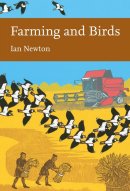
|
|
Guests of Summer: A House Martin Love StoryTheunis Piersma
Foreword: Ian Newton
British Trust for Ornithology
2016
"Guests of Summer tells the story of the House Martins of a small Dutch village, and the historic and contemporary connectedness of lives, both of birds and people. The journey begins from the comfort of a chair in Piersma's garden. Intrigued by the martins nesting on his house and the other swallow-like birds in the village, he begins to explore what it is like to be a House Martin. In doing this, Piersma weaves a tapestry that connects Anglo-Saxon migrations, Shakespeare's writings, political upheaval in the Congo, climate change and the big and frightening downsides of ongoing agricultural intensification. He does this using our aerial insectivores, the martins, swallows and swifts, as the most inspiring of canaries in the global coal mine."
|
Buy from amazon.co.uk 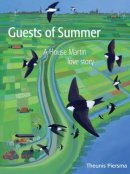
|
|
Bird PopulationsIan Newton
New Naturalist 124
Collins
2013
"In this seminal new work, Ian Newton sets out to explain why different bird species are distributed as they are, and changed over the years in the way that they have. The regular watching and study of birds now provides a source of recreation and pleasure for very large numbers of people, while continued monitoring of bird numbers can also alert us to impending environmental problems. For all of us, a world with fewer birds would be a poorer place."
|
Buy from amazon.co.uk 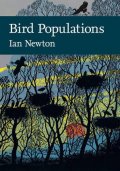
|
|
The History and Range Expansion of Peregrine Falcons in the Thule Area, Northwest GreenlandKurt K. Burnham with William A.Burnham, Ian Newton, Jeff A. Johnson and Andrew G. Gosler
Museum Tusculanum Press, University of Copenhagen / University of Chicago Press
2012
"The History and Range Expansion of Peregrine Falcons in the Thule Area, Northwest Greenland covers the discovery and history of the most northern breeding population of Peregrine Falcons in the world, near Thule Air Base in northwest Greenland (75.9 – 77.6°N). Although the region was explored by scientific expeditions as early as 1818, Peregrines were not documented in the area until the 1930s. By the early 1990s the population had become well established, with a warming climate enabling Peregrines from further south to expand their breeding range northward. Here Burnham and his co-authors present their comprehensive findings on the biology and ecology of this population based on thirteen years of research from 1993 to 2005."
|
Buy from amazon.co.uk 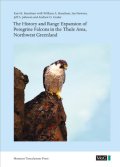
|
|
Gyrfalcons and Ptarmigan in a Changing World, Volume IConference Proceedings: 1-3 February 2011, Boise, Idaho, 2011
Editor: R.T. Watson, T.J. Cade, M. Fuller, G.
Hunt, and E. Potapov
The Peregrine Fund
2011
The Conference Summary which starts this collection of papers was written by Ian Newton.
"The conference brought together experts from around the world to share information and to develop a common purpose toward (1) understanding local, regional, and global factors affecting population dynamics of Gyr falcons, ptarmigan, and other prey, (2) looking for changing patterns of abundance throughout their circumpolar distributions, and (3) establishing a global strategy and plan of action for research and conservation of the sespecies. Invited speakers included world experts on Gyrfalcons, their prey, competitors, and habitat, as well as on climate change and associated alterations in arctic and alpine biotas, contamination, resource extraction,diseases, and other factors influencing the ecosystems in which these species occur."
|
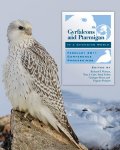 |
|
Bird MigrationIan Newton
New Naturalist Series 113
Collins
2010
"The phenomenon of bird migration has fascinated people from time immemorial. The arrivals and departures of different species marked the seasons, heralding spring and autumn, and providing a reliable calendar long before anything better became available. Migration is shown by many kinds of animals, including butterflies and other insects, mammals, marine turtles and fish, but in none is it as extensively developed as in birds. The collective travel routes of birds span almost the entire globe, with some extreme return journeys covering more than 30,000 km. As a result of migration, bird distributions are continually changing - in regular seasonal patterns, and on local, regional or global scales. Migration has repeatedly prompted familiar questions, such as where birds go or come from, why do they do it, how do they know when and where to travel, and how do they find their way? In this seminal new book, Ian Newton sets out to answer these - and other - questions. The book is divided into four main sections: the first is introductory, describing the different types of bird movements, methods of study, and the main migration patterns seen around the British Isles; the second part is concerned mainly with the process of migration - with timing, energy needs, weather effects and navigation; the third with evolution and change in migratory behaviour; and the fourth with the geographical and ecological aspects of bird movements."
|
Buy from amazon.co.uk 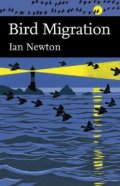
|
|
Handbook of the Birds of the World, Vol. 15: Weavers to New World WarblersEdited by Josep Del Hoyo, Andrew Elliott and David Christie
Illustrations: Norman Arlott, Hilary Burn, David Quinn, Douglas Pratt, Brian Small, Tim Worfolk
Lynx Edicions
2010
879 pages, 60 colour plates, 400+ colour photos, 612 distribution maps.
This volume covers weavers, waxbills, indigobirds, vireos, finches, hawaiian honeycreepers and new world warblers.
Ian Newton contributed to the Finch section.
|
Buy from amazon.co.uk 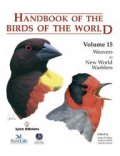
|
|
Encyclopedia of Animal BehaviorEditors-in-Chief: Michael D. Breed and Janice Moore
Elsevier / Academic Press
2010
This three volume publication includes a paper on Irruptive Migration by Ian Newton.
"This beautifully put together three-volume encyclopedia comprises 300-plus entries on a diverse range of topics in the contemporary study of animal behavior. Entries run the gamut from topic-focused (e.g., "Aggression and Territoriality," "Visual Signals") to those treating the behavior of a particular species or taxonomic group (e.g., "Bowerbirds," "Zebrafish"). The set also covers applied research, methodological issues, and historical topics, along with emerging areas of research such as animal welfare and the role of behavior in conservation. Most entries are five to eight pages long, and each concludes with a helpful list of recommendations for further reading and, in some cases, relevant Web sites. Breed and Moore have assembled an outstanding array of contributors, including many recognized experts in the field. The writing is crisp, clear, and to the point. Numerous tables and color figures add to the value of the text, and a lengthy glossary is included at the end of ! each volume. Although the sheer range of entries and the overlap among them could be a bit confusing, a "Subject Classification Index" located at the front of each volume organizes relevant entries under major subject headings. The editors state that their primary audience is advanced undergraduates, graduate students, and professionals looking for an overview of topics in animal behavior, and they have succeeded wonderfully in producing an indispensable reference work for this audience." |
Buy from amazon.co.uk 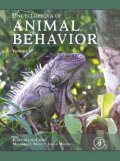
|
|
Ingestion of Lead from Spent Ammunition: Implications for Wildlife and HumansConference Proceedings: 12-15 May 2008, Boise State University, Idaho
Editor: Richard T. Watson, Mark Fuller, Mark Pokras
The Peregrine Fund
2008
The introduction of this collection of papers was written by Ian Newton. One of the papers, Effectiveness Of Attempts To Reduce Exposure Of Free-Ranging California Condors In Arizona And Utah To Lead From Spent Ammunition, was written by Rhys E. Green, W. Grainger Hunt, Chistopher N. Parish, and Ian Newton.
"Scientific evidence of the effects of lead on human health has brought forth large scale restrictions on its use, including the prohibition of lead in gasoline and paint. Responses on behalf of wildlife have been less forthcoming, but Bald Eagle consumption of contaminated ducks and geese contributed to the 1991 ban on lead shot for waterfowl hunting in the United States. Lead ammunition is still used in the US for purposes other than waterfowl harvest, and the extent to which lead is secondarily ingested by wildlife and humans has been the subject of recent investigations. An important step in understanding this problem is gathering relevant knowledge and scientific progress on these topics."
|
Buy from amazon.co.uk 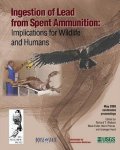
|
|
The Migration Ecology of BirdsIan Newton
Illustrations: Keith Brockie
Academic Press
2007
"This book presents an up-to-date, detailed and thorough review of the most fascinating ecological findings of bird migration. It deals with all aspects of this absorbing subject, including the problems of navigation and vagrancy, the timing and physiological control of migration, the factors that limit their populations, and more. Author, Ian Newton, reveals the extraordinary adaptability of birds to the variable and changing conditions across the globe, including current climate change. This adventurous book places emphasis on ecological aspects, which have received only scant attention in previous publications. Overall, the book provides the most thorough and in-depth appraisal of current information available, with abundant tables, maps and diagrams, and many new insights. Written in a clear and readable style, this book appeals not only to migration researchers in the field and Ornithologists, but to anyone with an interest in this fascinating subject."
|
Buy from amazon.co.uk 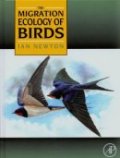
|
|
Raptor Research and Management TechniquesEditor: David M. Bird and Keith L. Bildstein
Hancock House Publishers
2007
Includes the paper, Assessing Nesting Success And Productivity, by K. Steenhof and Ian Newton.
"This is the much anticipated and thoroughly updated version of the popular but long out of print "Raptor Management Techniques Manual". Produced by the Raptor Research Foundation, this is a comprehensive work designed for use by raptor researchers and conservationists and natural-resource managers around the world. Each chapter has been authored by experts in the field and has undergone rigorous review. Not an all-inclusive manual or detailed 'how-to' book, this new work reflects the state of the art in raptor research, with up-to-date information on various techniques, and numerous references to additional sources for details and cautions regarding various field and laboratory techniques and management tools. Beginning with a general review of the field of raptor research, it includes insights into field-study techniques, information on the energetics, physiology, pathology, and toxicology of raptors; it covers reduction of management and researcher disturbance, mitigation, population monitoring at migration watchsites, captive breeding, the augmentation of wild populations, and rehabilitation, and concludes with chapters on public education and legal considerations. This book will enhance standardisation in the field, speed improvement in techniques and help those who study and manage birds to better protect them."
|
Buy from amazon.co.uk 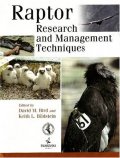
|
|
Bird Ecology and Conservation: A handbook of techniquesEditors: William J. Sutherland, Ian Newton & Rhys Green
Oxford University Press
2004
"In this intensely practical handbook, a team of leading ornithologists describes a wide range of standard methods rhat can be applied to the study of avian ecology and conservation. Topics covered range from surveys, tracking and handling to breeding biology, foraging behaviour and migration. Chapters on conservation techniques describe how to assess species over-exploitation, the methods available for the intensive conservation of endangered species, and the principles involved in the maintenance and restoration of habitats. This comprehensive synthesis will be essential reading for graduate students and researchers as well as a valuable resource for environmental consultants and professional conservationists worldwide." Contents: Bibby: Bird diversity survey methods; Gregory, Gibbons and Donald: Bird census and survey techniques; Green: Breeding biology; Gosler: Birds in the hand; Nichols, Kendall and Runge: Estimating survival and movement; Kenward: Radio-tagging; Akesson and Hedenstrom: Migration; Cooper: Information from dead and dying birds; Dawson: Techniques in physiology and genetics; Sutherland: Diet and foraging behaviour; Sutherland and Green: Habitat assessment; Jones: Conservation management of endangered birds; Runge, Kendall and Nichols: Exploitation; Ausden: Habitat Management."
|
Buy from amazon.co.uk 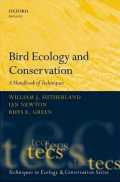
|
|
Speciation and Biogeography of BirdsIan Newton
Academic Press
2003
"This book should be of value to anyone interested in bird evolution and taxonomy, biogeography, distributional history, dispersal and migration patterns. It provides an up-to-date synthesis of current knowledge on species formation, and the factors influencing current distribution patterns. It draws heavily on new information on Earth history, including past glacial and other climatic changes, on new developments in molecular biology and palaeontology, and on recent studies of bird distribution and migration patterns, to produce a coherent account of the factors that have influenced bird species diversity and distribution patterns worldwide."
|
Buy from amazon.co.uk 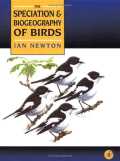
|
|
Return of the Peregrine: A North American Saga of Tenacity and TeamworkEditors: Tom J. Cade and William Burnham
The Peregrine Fund
2003
Includes the paper, The Contribution Of Peregrine Research And Restoration To A Better Understanding Of Peregrines And Other Raptors, by Ian Newton.
"The Peregrine Falcon restoration is the largest and most comprehensive endeavor to restore wild populations of an endangered species ever accomplished. The magnitude of the program and level of cooperation achieved are unique in nature conservation. Why and how this effort was achieved is documented in this book and serves as an example of what can be accomplished when people are willing to work cooperatively. Authored by 69 people with long-term involvement, and most of the individuals key to the success, the story is presented chronologically, topically, and geographically. Tom Cade begins with a prologue on the life history traits of the Peregrine Falcon in relation to recovery as only someone with over fifty years of experience can write. In the following 21 chapters and 57 sidebars the story unfolds in each author's own words. Although the focus is in North America, including Greenland, the story extends to Europe with two renowned British scientists contributing chapters. Derek Ratcliffe tells his story of discovering DDT as the cause for Peregrine Falcon decline, followed later in the book by Ian Newton documenting the contribution of the restoration program to the understanding of the Peregrine and summarizing what is known about the species."
|
Buy from amazon.co.uk 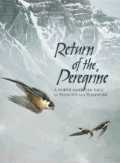
|
|
Birds of Prey in a Changing Environment: Based on the Proceedings of a SNH, BOU and JNCC Conference Dec 2002Editors: D.B.A. Thompson, S.M. Redpath, A.H. Fielding, M. Marquiss, and C.A. Galbraith
The Stationery Office Books, Edinburgh
2003
Includes the paper, The Role Of Natural Factors In The Limitation Of Bird Of Prey Numbers: A Brief Review Of The Evidence, by Ian Newton.
"Birds of prey are among the most fascinating and exciting of animals to observe and study. As predators they are at the heart of some of the most contentious conservation issues of the day. This book reflects this interest and presents substantial new data drawn from studies by professional and amateur ornithologists. Although this book focuses on birds of prey in the UK, it also includes work undertaken in Spain, France and Iceland. Taken as a whole, this is a remarkable collection of papers which will appeal to bird watchers, researchers, land managers, decision makers and the general public."
|
Buy from amazon.co.uk 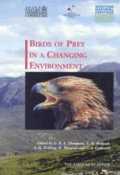
|
|
Avian MigrationEditors: P Berthold, E Gwinner and E Sonnenschein
Springer-Verlag
2002
Includes the paper Geographical Patterns In Bird Migration by Ian Newton.
"The reader of this comprehensive presentation benefits from an outstanding overview of all aspects of the fascinating phenomenon of bird migration. The book is written by leading experts from around the world. The text summarises reviews and discussions of the most recent hypotheses. In doing so, it covers the entire research field from phenomenology through to ecology, physiology, control mechanisms, orientation, evolutionary aspects and conservation measures. It also examines the most modern methodological approaches including, satellite tracking, molecular techniques or stable isotope investigations and envisages forthcoming developments in the course of global warming."
|
Buy from amazon.co.uk 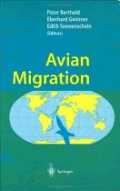
|
|
The Migration Atlas: Movements of the Birds of Britain and IrelandC. Wernham, M. Toms, J. Marchant, J. Clark, G. Siriwardena and S. Baillie
Illustrations: Ian Willis
Poyser
2002
Includes a section on the Sparrowhawk by Ian Newton.
"Using a vast amount of data that the British Trust for Ornithology have collected from ringing recoveries, this title presents detailed and up-to-date information on bird migration. Since the ringing programme began in 1909, there have been around half a million recoveries of birds ringed in the UK. The data yielded have enabled the BTO to build up a picture of the movements of around 200 migratory species, and this book presents that information in a clear and concise format."
|
Buy from amazon.co.uk 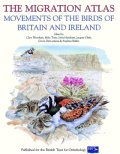
|
|
Ecology and Conservation of OwlsEditors: Ian Newton, Rodney Kavanagh, Jerry Olsen and Iain Taylor
CSIRO Publishing
2002
Co-edited by Ian Newton and includes the papers Population Limitation In Holarctic Owls by Ian Newton and Rodenticides in British Barn Owls by Ian Wyllie and Ian Newton.
"The chapters in this book derive from papers presented at a five-day conference devoted to the study of owls, which was held at the Australian National University, Canberra, in January 2000. The conference was the third in a series of international meetings on owls. It provided an opportunity for the presentation of new findings, for northern and southern hemisphere owl researchers to meet and discuss issues of mutual concern, and also for northern biologists to see some of the markedly distinctive species of the region."
|
Buy from amazon.co.uk 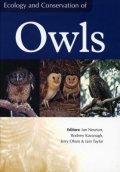
|
|
Birds Of Prey: Health And DiseaseEditor: John E. Cooper
Wiley-Blackwell
3rd edition
2002
Includes the paper Diseases In Wild Bird (Free-Living) Populations by Ian Newton.
"Raptor biology has evolved enormously since the publication of the original edition of this book under the title Veterinary Aspects of Captive Birds of Prey. With the help of leading international experts, John E. Cooper has updated and expanded this classic reference to include all the latest data on the health and diseases of raptors. While still serving the needs of veterinary surgeons who treat birds of prey, Birds of Prey: Health & Disease also appeals to a wide readership of falconers, avian researchers, breeders, rehabilitators and zoo staff. Important changes to this new edition are the inclusion of data on free–living birds, additional material on fractures, pathology, legislation and poisons, and new sections on neonatology, health monitoring, captive–breeding and host–parasite relations. This book reviews all aspects of birds of prey, giving invaluable up–to–date information on diseases and pathology, but also looking at the history of the subject, the origins of terms, the evolution of current thinking and ending with a reliable list of primary references for further reading."
|
Buy from amazon.co.uk 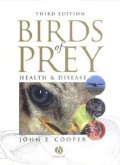
|
|
Ecology: Achievement and Challenge: 41st Symposium of the British Ecological SocietyEditor: M.C. Press, N.C. Huntly, and S. Levin
Blackwell Science
3rd edition
2002
Includes the paper Studies Of The Reproduction, Longevity And Movements Of Individual Animals by Ian Newton.
"Highlighting both the achievements of the past and the challenges of the future, this volume, first published in 2001, presents a review of the key ecological issues. Major topics are addressed in evolution and population biology; functional and community ecology; the ecology of changing environments; and the ecology of ecosystems, management and human impacts. It gives an account of key aspects of ecology and of its interfaces with related disciplines, such as genetics and economics. The international team of authors includes some of the most thoughtful ecologists of our time. This book will prove invaluable to both advanced students and researchers in ecology."
|
Buy from amazon.co.uk 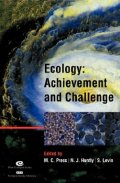
|
|
Raptors at Risk: Proceedings of the Fifth World Conference on Birds of Prey and Owls, Midrand, Johannesburg, South Africa, 4-11 August 1998Editors: R. D. Chancellor and B. U. Meyburg
Hancock House Publishers
2000
Includes the paper Effects Of Predators On Their Prey: Some Generalisations by Ian Newton.
"This volume comprises the Proceedings of the 5th World Conference on Birds of Prey and Owls held by WWGBP in Midrand, South Africa, 4-11 August 1998, and attended by over 250 ornithologists from all continents. The volume contains 895 pages, with 90 original papers, many diagrams, maps, line drawings and photographs."
|
Buy from amazon.co.uk 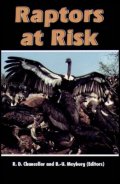
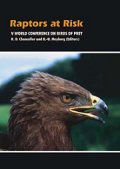
|
|
Statistics in EcotoxicologyEditors: Tim Sparks
Wiley-Blackwell
1999
Includes the paper Post-Fledging Behaviour, Dispersal And Survival In Eurasian Sparrowhawks. Organochlorines In Bird Of Prey Eggs: A Terrestrial Case Study by Ian Newton, P. Rothery, and R. Frumkin.
"Statistics in Ecotoxicology is a comprehensive, well–illustrated text, tailored to meet the needs of all ecotoxicologists from undergraduates to professionals. Avoiding mathematical jargon, the book uses worked examples to enable the reader to understand the potential of, and limitations of, statistical analysis in both the planning and operation of laboratory and field ecotoxicological experiments."
|
Buy from amazon.co.uk 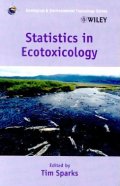
|
|
Proceedings of the 22nd International Ornithological CongressEditors: N.J. Adams and R.H. Slotow
BirdLife International South Africa
1999
Includes the paper Post-Fledging Behaviour, Dispersal And Survival In Eurasian Sparrowhawks. Organochlorines In Bird Of Prey Eggs: A Terrestrial Case Study by Ian Newton, P. Rothery, and R. Frumkin.
A CD-ROM with papers, symposium, discussion abstracts and other documentation from the 22nd International Ornithological Congress held in Durban, South Africa, 1998.
|
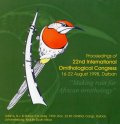 |
|
Population Limitation in BirdsIan Newton
Illustrations: Keith Brockie
Academic Press
1998
"Based on results from field studies, this book aims to be an introduction to understanding the processes of population limitation in birds. There are three sections covering: behaviour and density regulation; natural limiting factors; and human impacts."
|
Buy from amazon.co.uk 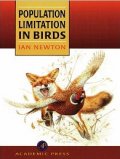
|
|
Conservation Science ActionEditors: William J.Sutherland
Wiley-Blackwell
1998
Includes the paper Pollutants And Pesticides by Ian Newton.
"This book reviews the latest thinking and approaches, and in doing so provides a readily accessible reference work for conservation professionals and managers. Because conservation biology is now one of the most dynamic disciplines in the life sciences, William Sutherland and his international team of authors have selected many of the liveliest topics where key advances are currently being made. They stress ideas, point to unresolved issues, and suggest possible future developments. Finally, since conservation is an applied subject, the book's emphasis throughout is on action."
|
Buy from amazon.co.uk 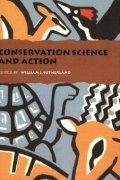
|
|
Holarctic Birds of Prey.: Proceedings of an International ConferenceEditors: R. D. Chancellor, B. U. Meyburg and J.J. Ferrero
ADENEX & WWGBP
1998
Includes two papers The Role Of The Individual Bird And The Individual Territory In The Population Biology Of Sparrowhawks Accipiter nisus and Migration Patterns In West Palearctic Raptors by Ian Newton.
"This volume comprises the proceedings of the International Conference on Holarctic Birds of Prey and Owls held by WWGBP in conjunction with the Spanish nature conservation organisation ADENEX in April 1995 at Badajoz, Extremadura, Spain and attended by over 400 ornithologists. The volume contains 680 pages, with 59 original papers."
|
Buy from amazon.co.uk 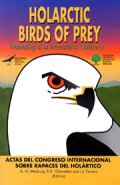
|
|
Advances in Vertebrate Pest ManagementEditors: D.P. Cowan and C.J. Feare
Filander Verlag
1998
Includes the paper Empirical Evidence Of Side-Effects Of Rodenticides On Some Predatory Birds And Mammals by Ian Newton, R.F. Shore, I. Wyllie, J.D.S. Birks, and L. Dale.
Papers presented at the First European Vertebrate Pest Management Conference.
|
 |
|
Biology And Conservation Of Owls Of The Northern HemisphereEditors: David H. Johnson. Thomas H. Nicholls James R. Duncan
U.S.Department of Agriculture
1997
Includes a paper Mortality Causes In British Barn Owls (Tyto alba), Based On 1,101 Carcasses Examined During 1963-1996 by Ian Newton, I. Wyllie, and L. Dale.
Papers from the 2nd International Symposium held on February 5-9 1997 at Winnipeg, Manitoba."
|
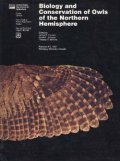 |
|
Raptors in Human Landscapes: Adaptations to Built and Cultivated EnvironmentsEditors: David M Bird, Daniel E Varland and Juan J Negro
Academic Press
1996
Includes a paper, Sparrowhawks In Conifer Plantations, by Ian Newton.
"This collection of papers considers the ways in which raptors have adapted to man-made landscapes and structures. It covers the impact of human activity, conditions associated with urban, cultivated and industrial landscapes, and the provision of artificial nest sites and platforms. Cases are drawn from around the world, including North and South America, Europe, Africa and elsewhere; and a broad range of species groups are included, such as falcons, accipiters, eagles, and kites."
|
Buy from amazon.co.uk 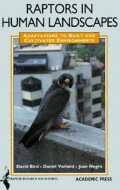
|
|
Partnerships in Birds: The Ecology of MonogamyEditor: Jeffrey M. Black
Oxford University Press
1996
Includes a paper, Monogamy In The Sparrowhawk, by Ian Newton and Ian Wyllie.
"Some birds mate for life, while others have many partners. Why? In this book, fourteen classic studies of bird behaviour are brought together to compare the different partnership patterns from ecological and evolutionary perspectives. Often there is a battle of the sexes, as individual birds behave in the way that serves their best interests. Introductory and concluding chapters review the latest thinking on this fascinating subject."
|
Buy from amazon.co.uk 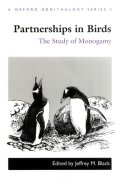
|
|
The New Atlas of Breeding Birds in Britain & Ireland 1988-1991David Wingfield Gibbons, James B Reid & Robert A. Chapman
Poyser
Published for the British Trust for Ornithology, the Scottish Ornithologists Club and the Irish Wildbird Conservancy.
1993
The section on the Sparrowhawk is by Ian Newton.
An atlas of breeding birds based on surveys undertaken between 1988 and 1991. The introduction describes the methods used in the survey work and explains the various analyses of the data gathered. The species accounts include three maps for each species, one showing breeding distribution, one showing relative abundance of the species throughout its range, and one highlighting changes in distribution between the figures used for this atlas and those for the previous atlas. Species accounts also include a brief text, additional tables and a vignette. Appendices give details of rare breeders as well as extra tabular data.
|
Buy from amazon.co.uk 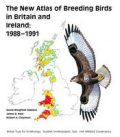
|
|
Natural Enemies: The Population Biology of Predators, Parasites and DiseasesEditors: Michael J. Crawley
Oxford University Press
1992
Includes a chapter on birds of prey by Ian Newton.
An international team of authors examines broad patterns in the population biology of natural enemies, and addresses general questions about the role of natural enemies in the population dynamics and evolution of their prey. For instance, how do large natural enemies like wolves differ from small natural enemies like bacterial diseases in their effects on prey abundance? Is it better to chase after prey, or sit and wait for it to come to you? How should prey behave in order to minimize the risk of being eaten?"
|
Buy from amazon.co.uk 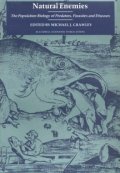
|
|
Bird Population Studies: Relevance to Conservation and ManagementEditors: Christopher M. Perrins, J.D. Lebreton, G.J.M. Hirons
Oxford University Press
1991
Includes a paper, Population Limitation In Birds Of Prey: A Comparative Approach, by Ian Newton. The concluding remarks, which form the final section of the book, are also by Ian Newton.
"There are more than 1000 species of threatened birds in the world, while many others are valued for sport and some are serious pests. All these bird populations require management of one kind or another. This volume reviews our current understanding of avian population dynamics and explores ways in which population studies can contribute to effective conservation and management. The earlier chapters review general questions such as estimation of demographic parameters, the role of mathematical modelling, and the special problems of island populations and seabird populations. The specific chapters are devoted to great tits, snow geese, white storks, puffins, flamingos, grey partridge, red grouse, common terns, herring gulls, lesser black-backed gulls, ducks, Florida scrub jays, and northern spotted owls. The emphasis throughout is on how bird populations are regulated under various constraints and conditions and on what changes we might expect under varying environmental regimes."
|
Buy from amazon.co.uk 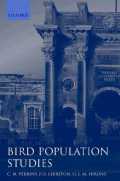
|
|
Birds Of PreyEditor: Ian Newton, Penny Olsen
Illustrations: Tony Pyrazakowski
Merehurst Press / Silverwater / Facts On File / Murdoch Books
1990
Reprinted in 2000 by Weldon Owen
Reprinted in 2001 by Fog City Press
"Describes various kinds of eagles, hawks, condors, ospreys, falcons, and vultures, provides information on their characteristics, behavior, and range, and explains why many face extinction."
|
Buy from amazon.co.uk 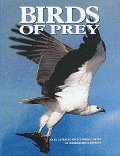
1990 edition
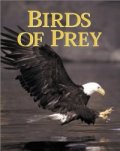
2000 edition |
|
Lifetime Reproduction in BirdsEditor: Ian Newton
Academic Press
1990
"Biologists have long realized that an individual's reproductive success measured over its entire lifetime is an important component of its fitness. Until recently, however, most of the available measures of breeding output have been restricted to particular breeding seasons, and have often involved unidentifiable individuals. Thanks to long-term studies of marked individuals, information is now available on the lifetime reproduction of many bird species. This book brings together results from most of these studies and presents much new information and many new analyses of classic data sets. A wide variety of types of bird are represented, from small songbirds to seabirds, birds of prey and wildfowl. Important pointers emerge regarding the role of the individual in population processes and the factors which affect individual performance in the wild. The effects of age and experience on breeding success and survival prospects are also assessed, and the question of senility is discussed."
|
Buy from amazon.co.uk 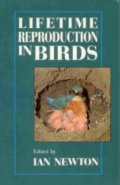
|
|
The Greenhouse Effect and Terrestrial Ecosystems of the United KingdomEditors: M.G.R. Cannell and M.D. Hooper
Institute of Terrestrial Ecology
Natural Environment Research Council
1990
Ian Newton and M. Marquiss contributed the section on effects on birds.
Preface: "A few years ago, the notion that man could warm the earth by producing greenhouse gases was treated with some scepticism, despite the considered opinion of many scientists over nearly 20 years and the 002 record from Mauna Loa. Today, almost everybody is familiar with the notion, and most scientists accept that some warming will probably occur. Of course, it is uncertain how much warmer the earth will be, how regional climates will be affected, and how soon an effect will be observed, but these uncertainties are no reason to ignore the probability. By the time we are certain, it will be too late to stop considerable further warming, and we shall have to respond all the faster to the impacts. It is better to consider the likely impacts now and to develop the knowledge that might be needed in 20-30 years' time. It is also necessary to consider action that can mitigate or exploit potential effects." |
Buy from amazon.co.uk 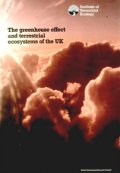
|
|
Raptors in the Modern WorldEditors: R. D. Chancellor and B. U. Meyburg
World Working Group on Birds of Prey and Owls
1989
Includes the paper The Control Of Sparrowhawk Accipiter nisus Nesting Densities by Ian Newton.
Proceedings of the 3rd World Conference on Birds of Prey and Owls. The papers are presented in five main sections: raptors on migration and wintering; population biology; biology and conservation of rare diurnal raptors; owls; and raptors in polluted environments. These are followed by three shorter sections: habitat analysis and census techniques; promotion of legislation; education in raptor conservation.
|
Buy from amazon.co.uk 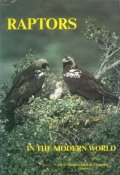
|
|
Proceedings of the Northeast Raptor Management Symposium and WorkshopEditors: B.G. Pendleton, M.N. LeFranc, Jr., M.B. Moss, C.E. Ruibal, M.A. Knighton, and D.L. Krahe
National Wildlife Federation Scientific & Technical Series
1989
Includes the keynote address from the symposium Population Limitation In Raptors by Ian Newton.
The symposium was held on 16-18 May 1988 at Syracuse, New York.
|
Buy from amazon.co.uk 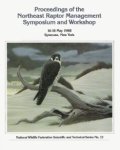
|
|
Ecotoxicology
Institute of Biology
1989
Includes a paper, Organochlorine Insecticides And The Sparrowhawk: Toxic Effects And Population Trends, by Ian Newton.
The Proceedings of a Joint Symposium of the Institute of Biology and the British Toxicology Society Held on 23 September 1988.
|
 |
|
Peregrine Falcon Populations: Their Management and RecoveryEditors: Tom J. Cade, James H. Enderson, Carl G. Thelander, Clayton M. White
The Peregrine Fund
1988
Includes two papers Changes In The Status Of The Peregrine In Europe: An Overview and Population Regulation In Peregrines: An Overview, by Ian Newton.
The proceedings of the 1985 Sacramento Conference on Peregrine biology, which assessed the worldwide status of the Peregrine 20 years after the Madison Conference which focused world attention on the decline of this species. The volume covers status of the species in the US, Europe and the rest of the world, results of studies on pesticide effects, ringing and population dynamics, and programmes for the species reintroduction and management.
|
Buy from amazon.co.uk 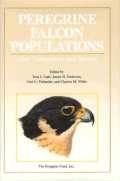
|
|
Reproductive Success: Studies of Individual Variation in Contrasting Breeding SystemsEditor: T.H. Clutton-Brook
University of Chicago Press
1988
One of the chapters in the section about birds is Age and Reproduction in the Sparrowhawk by Ian Newton.
|
Buy from amazon.co.uk 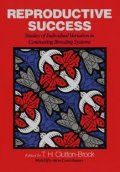
|
|
Britain Since "Silent Spring": Update on the Ecological Effects of Agricultural Pesticides in the U.K.Editor: D.L.J. Harding
Institute of Biology
1988
Includes a paper, Monitoring Of Persistent Pesticide Residues And Their Effects On Bird Populations, by Ian Newton.
|
Buy from amazon.co.uk 
|
|
Proceedings of the International Symposium on Raptor Reintroduction, 1985Editor: D.K. Garcelon and G.W. Roemer
Institute for Wildlife Studies
1988
Includes a paper, Reintroduction and its relation to the management of raptor populations, by Ian Newton.
|
 |
|
The SparrowhawkIan Newton
Shire Natural History 16
1987
"This book discusses aspects of the behaviour and biology of the Sparrowhawk including distribution, habitat, food preferences, breeding, movements and mortality."
|
Buy from amazon.co.uk 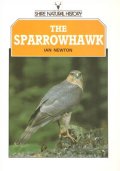
|
|
The SparrowhawkIan Newton
Illustrations: Keith Brockie
Poyser
1986
This book is based on the study of many individual Sparrowhawks during a 14 year period in South West Scotland.
|
Buy from amazon.co.uk 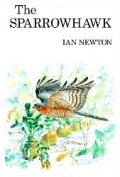
|
|
Afforestation And Nature Conservation Interactions
Timber Growers
1986
Includes a paper, Birds & Forestry, by Ian Newton.
|
 |
|
Conservation Studies on RaptorsEditor: I. Newton and R.D. Chancellor
ICBP / BirdLife Technical Publication Series 5
BirdLife International
1985
Proceedings of the ICBP World Conference on Birds of Prey, April 1982, Thessaloniki, Greece.
Comprises 6 main sections:
- Part I: Mediterranean Raptors
- Part II: Tropical Forest Raptors
- Part III: Migration Of Raptors
- Part IV: The Peregrine Falcon
- Part V: Management And Conservation Of Raptors
- Part VI: The Biology Of Vultures
|
Buy from amazon.co.uk 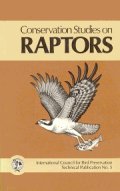
|
|
A Dictionary of BirdsEditors: B. Campbell and E. Lack
Poyser
Published for The British Ornithologists Union
1985
The Falcon entry in this dictionary is written by Ian Newton.
A Dictionary of Birds contains contributions from over 280 ornithologists and other specialists from around the world. Major, authoritative articles cover the field of modern ornithology and related subjects. In addition there are articles on all the bird families, almost all of which are illustrated by a representative species. There are also numerous short entries defining special terms, application of names, etc. The text of over 800,000 words is supported by more than 500 photographs, drawings and diagrams.
|
Buy from amazon.co.uk 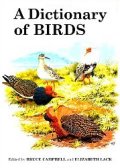
|
|
The Encyclopedia of BirdsEditor: Christopher M. Perrins and Alex L.A. Middleton
Allen and Unwin
1985
The section on birds of prey in this encyclopedia is written by Ian Newton.
|
Buy from amazon.co.uk 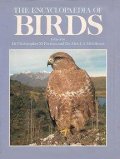
|
|
Centenary Conference on Forestry and ConservationEditor: E.H.M. Harris
Royal Forestry Society
1983
Includes a paper, Birds & Forestry, by Ian Newton.
|
 |
|
Recent Advances In The Study Of Raptor DiseasesEditor: J.E. Cooper and A.G. Greenwood
Chiron
1981
Includes a paper, Mortality Factors In Wild Populations, by Ian Newton.
|
Buy from amazon.co.uk 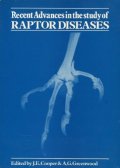
|
|
Population Ecology of RaptorsIan Newton
Illustrations: Jim Gammie
Poyser
1979
"This work provides a synthesis of recently discovered facts concerning population regulation in raptors. The author details their social behaviour, their dispersion, numbers, movements, breeding, and mortality. He also deals with the effects of pesticides and other pollutants on raptors. Including all relevant material and information from around the world, this book provides a sound basis for further research and more effective conservation. Contents: Relationship Between the Sexes; Dispersion; Breeding Density; Winter Density; Problems Concerning Nest-Sites; Breeding Strategies; Breeding Rates; Behaviour in the Breeding Season; Fidelity to Breeding Areas; Movements; Mortality; Human Persecution; DDT and Other Organo-Chlorines; Other Pollutants and Pesticides; Conservation Management; Breeding from Captive Birds; Conclusions; Bibliography; Scientific Names of Raptors."
|
Buy from amazon.co.uk 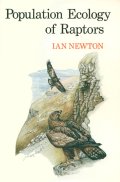
|
|
Animals As Monitors Of Environmental Pollutants
National Academy of Sciences
1979
Includes a paper, The Effects Of Organochlorines On Reproduction Of British Sparrowhawks (Accipiter nisus), by J.A. Bogan and Ian Newton.
|
Buy from amazon.co.uk 
|
|
The Second Bird-Watchers' BookEditor: John Gooders
David & Charles
1975
Includes a section, Hawks And Man, by Ian Newton.
|
Buy from amazon.co.uk 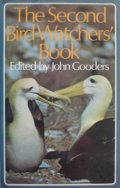
|
|
FinchesIan Newton
Collins
New Naturalist 55
1972
"This illustrated survey of finch behaviour is a thorough, non-technical account of the habits of these birds throughout the world. Dr. Newton uses his extensive bird-watching experience and knowledge of the published literature to document the main patterns of feeding, development of feathers, breeding, and migration. As a result, he presents the changing relationship of the birds to their environment."
|
Buy from amazon.co.uk 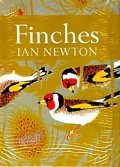
|
|